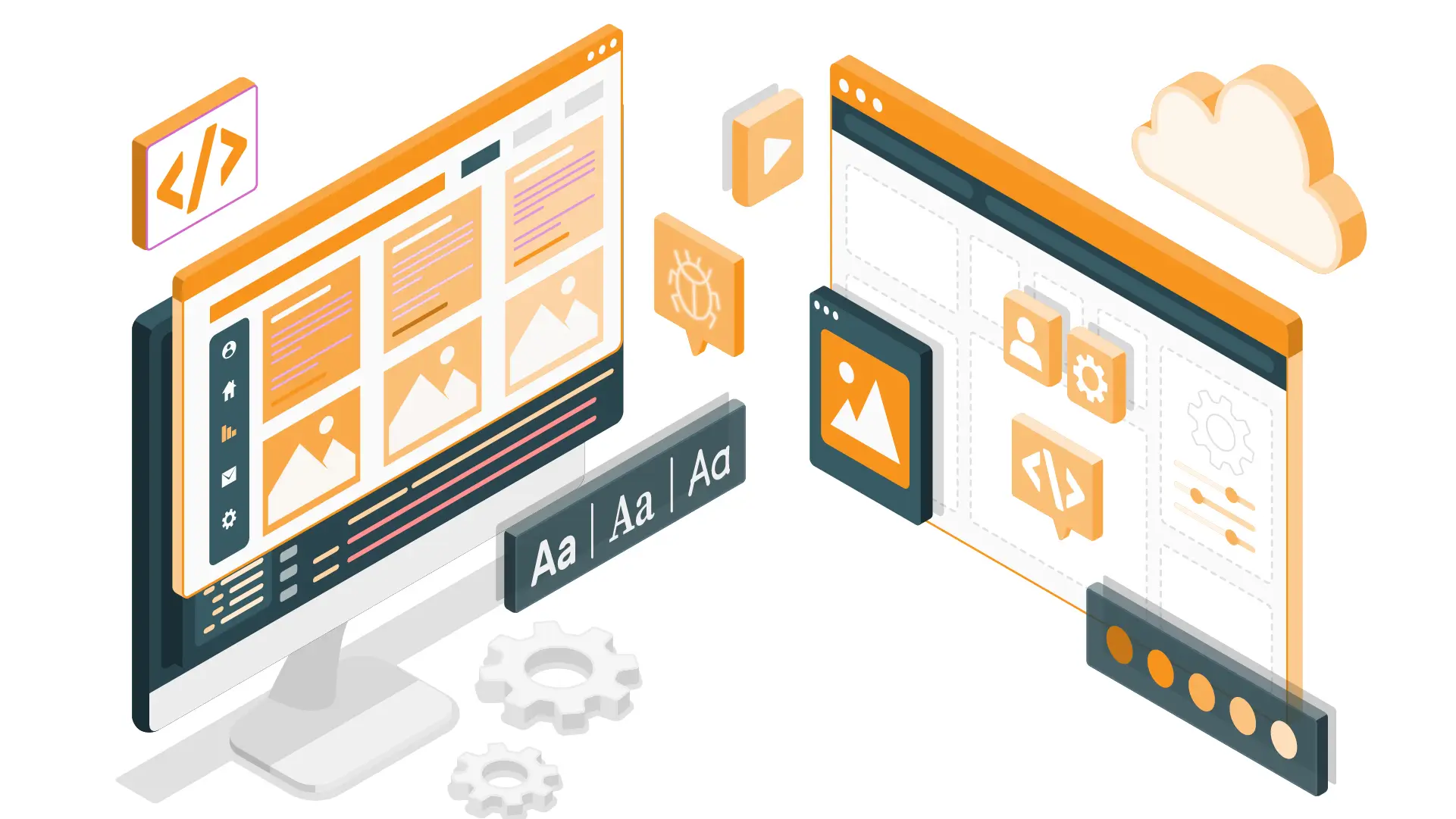Functional testing validates the software system against the functional requirements/specifications. Functional testing aims to test each function of the software application by providing appropriate input and verifying the output against the functional requirements. It involves black box testing and is not concerned about the application's source code. Each system functionality is tested by providing appropriate inputs and verifying the output. It involves a series of tests that perform a feature-by-feature validation of behavior using a wide range of normal and erroneous input data.
What are Functional Testing Tools and Frameworks?
Functional testing tools and frameworks are designed to validate the functionalities of software applications based on predefined specifications and requirements. These tools ensure that each application feature works as intended by simulating real user interactions and comparing the actual outputs with expected results. Functional testing frameworks often provide reusable scripts and predefined structures to execute a wide range of tests efficiently. Common examples include Selenium, TestNG, and JUnit, which help automate the testing process, increasing the accuracy and speed of testing efforts.
How Functional Testing is Done Using Tools
Functional testing using tools involves writing test cases that mirror the expected functionality of the application. The process begins with setting up the testing environment, including the required tools and frameworks. Once the environment is ready, testers create test scripts to simulate real-world usage scenarios, execute the tests, and evaluate whether the application behaves as expected. Tools like Selenium, UFT, and Appium can automate the process by interacting with the application’s UI, while frameworks like Cucumber allow writing behavior-driven tests. Developers analyze the results of these tests to identify any functional issues.
Can Functional Testing Be Automated?
Yes, functional testing can be automated, and automation helps ensure the efficiency and coverage of tests. Automation tools like Selenium and Appium allow repetitive and complex functional tests to be run without human intervention, accelerating the testing process and reducing manual errors. Automated functional testing is especially beneficial for regression testing, where the same test cases must be executed repeatedly as the software evolves. However, it’s important to recognize that not all functional testing can be automated, as certain aspects, such as user experience or visual validation, may still require manual testing.
Benefits of Functional Testing
Functional testing ensures that your software application performs as expected under various scenarios, directly impacting the quality, user experience, and operational stability. Let's dive into the benefits:
- Verification of Functionality: Functional testing verifies every function of the software application by feeding it inputs and examining the outputs. This rigorous testing ensures that all user requirements are met and that each part of the system works by the specified requirements.
- Detection of Application Errors: By testing each function, potential errors in the code can be identified and rectified early in the development cycle. This early detection helps prevent minor bugs from escalating into more significant issues, which can be costly and time-consuming to resolve at later stages.
- Reduction in Development Costs: Identifying and fixing defects early in the development process significantly reduces the cost associated with post-release patches and fixes. The later a defect is discovered, the more expensive it is to correct.
- Improves User Experience: Functional testing ensures the application is intuitive and easy to use. Testing the application from a user's perspective helps identify usability issues that might not be obvious during the development phase.
- Facilitates Regulatory Compliance: Many industries have strict regulatory requirements for software that must be adhered to. Functional testing helps ensure the software meets these standards, avoiding legal issues and fines.
- Supports Product Quality and Reliability: By ensuring that all functions perform correctly before the product is released, functional testing contributes to overall product quality and reliability. This reliability builds trust with the users and provides a competitive edge in the market.
- Enables Smooth Integration: Functional testing checks the interfaces between modules to ensure smooth integration and data flow in systems where multiple subsystems or modules need to interact. This is critical in complex systems where different teams develop modules.
- Market Readiness: Functional testing helps ensure the product is ready for the market. By confirming that the product meets all requirements and works as intended, businesses can avoid the reputational damage associated with launching a faulty product.
- Customer Satisfaction: Ultimately, functional testing leads to higher customer satisfaction as the product released to the market performs as expected without causing frustrations to the end-users. Satisfied customers will be loyal to the brand and recommend the product to others.
- Scalability Testing: Functional testing can also be used to verify if the new features can be integrated without affecting the application's existing functionality, ensuring that the system can scale up effectively to meet increased user or data loads.
Each benefit is crucial in meeting but exceeding user expectations and maintaining the highest software quality standards. By integrating comprehensive functional testing into the development process, organizations can achieve a more robust and reliable product, leading to better business outcomes.
Read: How Can You Prioritize Automated Functional Test Scenarios?
Top 10 Functional Testing Tools and Frameworks
Selenium
- Key Features: Supports multiple browsers and programming languages. Selenium WebDriver allows direct calls to the browser; Selenium Grid enables parallel testing.
- Use Cases: Ideal for complex web application testing scenarios requiring interaction with browser-specific drivers and robust browser control.
Robot Framework
- Key Features: Utilizes a keyword-driven approach for simplicity and ease of learning. It's extendable with Python and Java libraries.
- Use Cases: Best suited for acceptance testing and acceptance test-driven development (ATDD) where clear, concise keyword instructions are necessary.
JUnit
- Key Features: Allows assertions for testing expected results, annotations to define test methods, and run tests in batches.
- Use Cases: Predominantly used for unit testing in Java environments, but can be adapted for functional testing of specific functionalities.
Cucumber
- Key Features: Supports Behavior Driven Development (BDD) with specifications written in plain language, promoting communication across tech and non-tech team members.
- Use Cases: Useful for teams focusing on collaboration and behavior specifications, ensuring all stakeholders understand the tested scenarios.
Appium
- Key Features: Facilitates cross-platform app testing, including iOS, Android, and Windows apps. Works well with native, hybrid, and mobile web applications.
- Use Cases: Ideal for mobile application testers who need a single framework to manage multiple platform versions and devices.
TestLink
- Key Features: Provides test specification, planning, reporting, requirements tracking, and collaboration features integrated into a comprehensive test management solution.
- Use Cases: Suitable for teams requiring a robust organization and tracking tool to manage complex testing cycles and large test cases.
Gauge
- Key Features: Supports writing test cases in Markdown, which makes the test scripts easy to read and maintain. It is also highly modular and rich in plugins.
- Use Cases: Fits projects that need a lightweight, human-readable framework that supports rapid test development and maintenance.
Apache JMeter
- Key Features: It was initially designed for performance testing and supports functional testing. Can simulate heavy loads and analyze overall performance under different load types.
- Use Cases: Works best for applications requiring performance and functional testing capabilities, especially for APIs and services.
Watir
- Key Features: Built on Ruby, it allows easy writing of tests to read and maintain. It interacts with browsers in the same way humans do.
- Use Cases: Excellent for web application testing where tests need to simulate real user interactions within a browser effectively.
SikuliX
- Key Features: It uses Image recognition to identify and control GUI components. This is helpful in scenarios where traditional HTML objects are not identifiable.
- Use Cases: Highly effective for desktop applications with non-standard user interfaces that cannot be easily automated using other tools.
How HeadSpin Can Help with Functional Testing
HeadSpin is a global platform that helps organizations perfect the connected experience on any interface. By integrating with functional testing frameworks like Selenium and Appium, HeadSpin provides real-time feedback and actionable insights, crucial for delivering flawless digital experiences. Here's how HeadSpin makes a difference:
- Real Device Testing: Test on real devices in real user conditions worldwide without maintaining the hardware.
- Performance Analytics: Detailed analysis to pinpoint functionality, usability, and performance issues.
- AI-driven Insights: Leverage AI to detect anomalies and optimize test cases and user experience.
Wrapping It Up: Why Opt for Modern Functional Testing Tools
In today's fast-paced digital environment, using advanced functional testing tools is not just an option but a necessity. These tools offer automation capabilities that significantly reduce testing time and provide high accuracy in bug detection. Furthermore, with the integration of AI and ML, functional testing tools are becoming smarter, making them indispensable in the QA process.
By adopting these functional testing tools and leveraging platforms like HeadSpin, organizations can ensure their products are robust, user-friendly, and performant under various conditions. Remember, the right tool can dramatically streamline your testing process, leading to faster releases and a better product.
FAQs
Q1. How are functional testing and non-functional testing different?
Ans: Functional testing focuses on the operational aspects of a software application, whereas non-functional testing assesses qualities such as performance, usability, and reliability.
Q2. Can functional testing be automated?
Ans: Yes, most functional testing can be automated to enhance efficiency and accuracy, and many tools like Selenium and QTP/UFT specialize in automation.
Q3. Is manual testing still relevant with the advent of automated functional testing tools?
Ans: While automated testing speeds up the process and increases coverage, manual testing is still crucial for scenarios requiring human judgment and intuition.










































-1280X720-Final-2.jpg)






